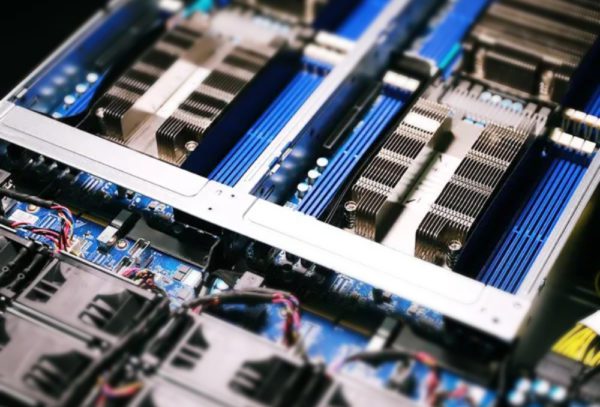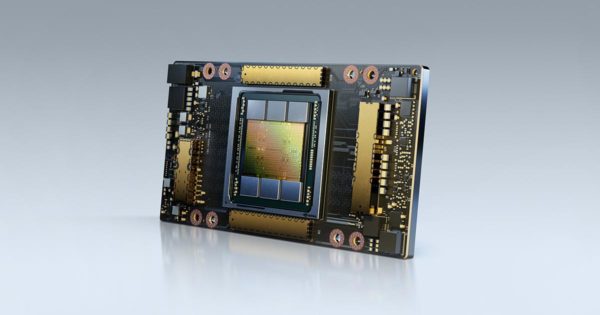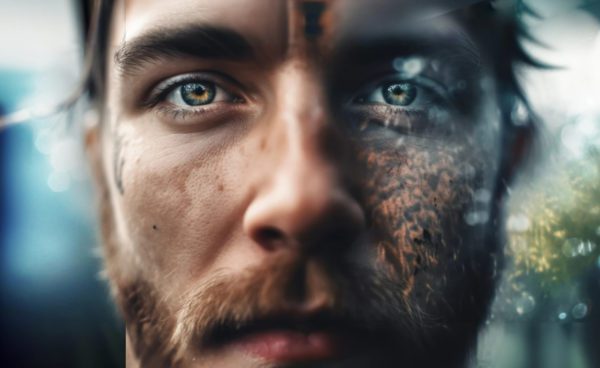Leaders in biomedical research. This cluster brings great computing power to the research team. Thanks to it, they will develop their research on the discovery of the mechanisms of aging and cell reprogramming in humans.
Discovering the mechanisms of cellular aging
Thanks to Luis Lozano (COMMLAB University of Valencia) for the cover infographic
SIE installs the TALOS cluster
at the Rey Juan Carlos University of Madrid
Great computing power

Leaders in biomedical research
The Talos Cluster is the result of collaboration between Sergio Muñoz, PhD in machine learning and professor of biomedical engineering at the Universidad Rey Juan Carlos, and Raul Díaz, founder and project manager of the company Sistemas Informáticos Europeos
At the end of 2022, the installation and configuration of the cluster of the Universidad Rey Juan Carlos, led by researcher Sergio Muñoz.
This cluster brings great computing power to the research team. In this way, they will be able to advance their valuable research focused on unraveling the mechanisms of aging and cell reprogramming in humans.
Called Talos, after the first non-organic artificial intelligence in Classical Greece, it was a giant automaton that watched over the island of Crete and protected it from its enemies.
THE INVESTIGATION
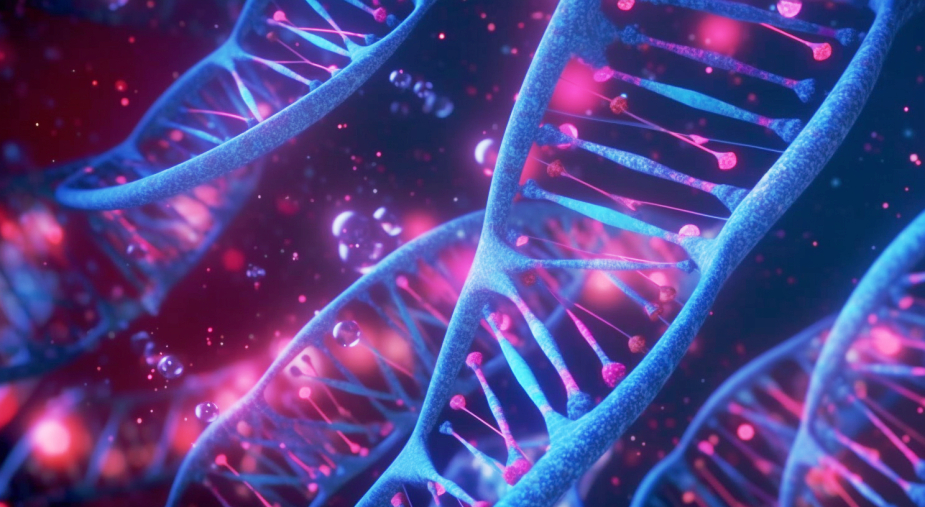
The main approach, being one of the most critical in this sense, is that of health, in particular, biomedical engineering.
The goal
Leaders in biomedical research. Dilemma Lab SL
The objective of the research in its main line is to understand the molecular and cellular mechanisms of ageing, in the natural sense, from youth to old age, and in the reverse sense, in that of cellular reprogramming. This research places us as leaders in biomedical research
Obstacles overcome
Research covers various topics, including cardiology and the study of heart disease. In addition, they collaborate with a prestigious research group in Murcia and Arrixaca. This group has numerous samples of heart tissue and blood.
However, the group needs funding to analyze these samples. In this context, they face two main challenges:
- First, get money to analyze the samples at the multiomic and single cell level.
- Second, manage and process the large amount of data obtained efficiently.
The areas of research
The research addresses areas where explaining algorithms and data is essential, as understanding the information collected helps solve problems.
In these fields, "black boxes" are not suitable, as they cannot answer such questions.
Although humans are adept at perceptual tasks, we find it difficult to find hidden answers in huge data sets and detect underlying patterns.
Deep Learning and Artificial Intelligence
In their research, they need algorithms that scale horizontally, especially in machine learning interpretable. When facing problems with big data, there was limited storage and infrastructure to scale and run algorithms quickly.
Therefore, they prioritized having many CPUs.
In addition, they created explainable artificial intelligence algorithms, focusing on deep learning and generative models. Here, it is crucial to have advanced GPUs based on the Ampere architecture.
As they also design spatiotemporal simulation models, it is imperative that GPUs handle double precision computations efficiently.
computational needs
Thus, the needs of the group were mainly three:
– Many CPU nodes to do parallel computing and apply their models of machine learning interpretable.
– Next-generation, double-precision GPUs for explainable AI models and simulation.
– A lot of storage, especially for the biomedical application that will be explained below and that allows for a significant amount of funding to be obtained through a European research project that involves researchers from all over the world.
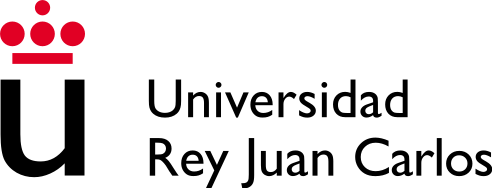
THE TEAM BEHIND THE PROJECT

Sergio Muñoz | URJC
Sergio Muñoz
Sergio Muñoz, PhD in machine learning and professor of biomedical engineering at the Universidad Rey Juan Carlos, works on the design of artificial intelligences and algorithms of machine learning.
He collaborates with professors and researchers from the BigMed+ group at the same university.
La Universidad Rey Juan Carlos
Leaders in biomedical research
La Universidad Rey Juan CarlosBeing a young and dynamic institution, it strives to contribute to the vanguard of knowledge, an achievement that is reflected in national and international rankings, making this organization one of the leaders in biomedical research.
Currently, it has approximately 46.000 students spread over 5 campuses with 28 departments in multiple fields of arts, sciences, and literature.
Fighting COVID, present and future
Understanding the impact of COVID-19
With the arrival of COVID-19 in 2020, the need arose to understand why it affected older people and people with previous heart disease more seriously. This approach led to the REACT-EU project, which provided funding to overcome technical and financial barriers.
Multidisciplinary project: Collaboration and financing
The project "Machine Learning on Single Cell Multiomic to Relate COVID-19, Aging and Cardiopathies” was funded as part of the Union's response to the COVID-19 pandemic.
It involved the collaboration of centers such as CNB-CSIC, CEMBIO, Science Park of Madrid y MIT.
Preclinical model: Studying the cytokine storm
The research groups of the Universidad Rey Juan Carlos developed a preclinical animal model to study the effects of the cytokine storm. This severe immune reaction caused mortality in COVID-19 patients, especially the elderly and people with heart problems.
Platform for Treatments: Coping with COVID-19 and beyond
With this preclinical model, a platform was created to detect targets and design useful treatments not only for COVID-19, but also for other pathologies or future pandemics. The project allowed the creation of a supercomputing center to design and apply the necessary algorithms in their studies.
Leaders in biomedical research
Technology integration: Towards an efficient computing center
An integration team was contacted to design a cluster with the necessary technical capabilities. Thanks to SIE's knowledge and experience in HPC, the ideal computer center for the investigations was configured, integrating machines acquired from Gigabyte.
Dilemma Lab SL
promising future
Advances
This research group focuses on the knowledge discovery and transfer. The supercomputing center benefits both the project groups and society in general.
Dilemma Lab SL
Leaders in biomedical research
Knowledge transfer is carried out through the spin-off EBTC, Dilemma Lab SL This company was created in collaboration with a researcher from the Miguel Hernández University of Elche.
Research lines
1.- Cellular aging. Revealing the mechanisms that produce it.
2.- Partial cell reprogramming. Studying the reversal of cell deterioration to improve quality of life in advanced stages.
3.- Heart disease. Using the cardiac signals and the techniques of the previous lines for its prevention and treatment.
4.- Oncology. Going deeper into its mechanisms for personalized treatment, studying the feasibility of applying the second line of research mentioned above.
The technical section

Technology and computing power
Technology Gigabyte integrated by SIE provides great computing power to researchers. They use GIGABYTE Server Management (GSM) to manage the cluster.
This innovative cluster offers 512 CPU threads y 221.184 GPU cores. Total power exceeds 20.000 Tflops
Connectivity and storage
Connectivity and storage
The A100 cards are interconnected via NVLINK buses, reaching speeds of 600 Gb/s. NVIDIA/Mellanox Infiniband HDR is used to connect equipment, allowing:
- Interconnect 32 A100 cards through NVSwitch and Infiniband protocol.
- Add 256 CPU cores (512 threads) with AMD Milan 7763 processors.
- Access 576 TB of shared storage with high management speed. Access to this shared storage capacity of the cluster is done by native InfiniBand, with high management speed, through a data and metadata repository, to which access by BeeGFS, allows a great concurrent speed of the nodes and user management
The system can be expanded up to 1 PB in the future.
Ladon OS 8 HPC Ecosystem
SIE mounts the system in the ecosystem HPC Ladon OS 8, based on Open Source pieces. Avoid paying for proprietary software and reduce costs. Fundamental tools include:
- RockyLinux 8.7: Base operating system, stable and updatable. It isolates the internal network from the external one using IP table.
- SLURM: Queue or workflow system used by leading clusters such as Mare Nostrum or Hyperion.
- Docker: Container system that allows individualizing applications without virtualizing the entire machine.
- CheckMK: Management console based on Nagios. It works through IPMI and monitors devices through SNMP.
- EasyBuild: Software creation and installation framework for managing scientific software on HPC systems efficiently.
PROJECT FUNDED BY:


Sistemas Informáticos Europeos, supports all AI laws created to respect human rights and copyright:
Generation of content for this post: Raul Díaz, Stefano Lione SIE, Sergio Muñoz URJC
Coordination, adaptation, prompts, design: Alberto Uriarte SIE (Kosta TS)
Photographer: HUMAN
Cover infographic: Thanks to Miguel Lozano COMMLAB University of Valencia
Video: Information at the end of it
SEO, Spell checking, writing and adaptation: Chat GPT 4
Translation: G Translate
Final digital photography: Midjourney





